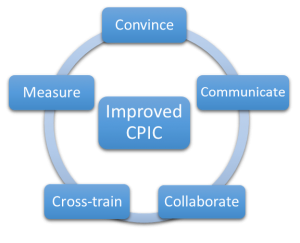 Recently, the Integrity Matters blog asked the question, “Are You Making the Business Case for Federal Cybersecurity?” in an article about why and how to develop a business case through the Capital Planning Investment Control (CPIC) process in order to justify return on investment in cybersecurity programs. Now we ask the question, “Are You Making the Business Case for CPIC” itself?
Recently, the Integrity Matters blog asked the question, “Are You Making the Business Case for Federal Cybersecurity?” in an article about why and how to develop a business case through the Capital Planning Investment Control (CPIC) process in order to justify return on investment in cybersecurity programs. Now we ask the question, “Are You Making the Business Case for CPIC” itself?
Program managers who have had to do more with less the past few years, may feel they don’t have the necessary resources to dedicate to CPIC support. They may feel that the Office of Management and Budget’s (OMB) requirement for business cases is more of a “check the box” reporting need. But based on our own experience with numerous federal agencies and programs, the CPIC process is worth defending because it provides a framework of management principles and tools to prove that federal investments align with agency missions and support business needs with low risk.
Integrity Matters authors have written extensively on CPIC. Here are five of the team’s top take-away’s for those interested in improving CPIC in their organization.
- Explain Why CPIC Matters
CPIC is mandated by the 1996 Clinger-Cohen Act, which “requires federal agencies to use a disciplined process to acquire, use, maintain and dispose of information technology (IT).” Agencies use the CPIC process for both IT and non-IT investments. Beyond the legal requirement, there are many reasons why devoting time and resources to CPIC is a good decision.
- The process helps agencies and departments get clarity on the success of their investments in Capital assets such as land, structures, equipment and intellectual property. Integrity CPIC experts say it helps teams “see the forest for the trees.”
- This insight enables the appropriate governing body to make sound investment decisions based on the results of clear, comprehensive analysis and factual evidence.
- It provides an efficient and effective process through which all involved parties can have defined roles and responsibilities.
2. Understand and Communicate Expectations
The OMB issues guidance on the preparation and submission of budget documents and IT business cases. Stakeholders must be informed so they have a clear understanding of any changes to process or expectations by OMB. Knowing these expectations early will enable the team to gather the necessary level of detail and to meet reporting deadlines. It will also allow them to calculate upfront the amount of time and resources necessary to update business cases.
- Step Out of the Silos
Traditionally, CPIC support teams are specialists whose main function is to create portfolios and business cases. This type of approach can get the job done, but misses an opportunity to synthesize broad perspectives, knowledge and skills. To generate portfolios that communicate mission and economic value agency-wide, consider approaching the CPIC process with an interdisciplinary team.
- Carefully Choose and Cross-Train the Team
Portfolios and business cases include sections that address a range of functional disciplines and skill areas, and an interdisciplinary team should also. It can include people with expertise in strategic planning, budget and finance, program management, contracting, IT, and communication. Ensuring group members have some level of cross-training both allows them to see each other’s perspectives, and creates knowledge back-stops over the CPIC cycle.
- Measure Progress
Just as CPIC allows agencies to measure the success of their investments, it is also possible to track how well CPIC is being implemented in an agency. For example, outcome-focused metrics could show improvement of the scores for business cases from initial to final delivery or year-over-year (as one of our teams found when working with TSA, which received the highest possible score three years in a row). Other metrics could measure CPIC stakeholder involvement, attendance and output.
The Business Case for CPIC
Capital Planning Investment Control is more important than ever in a resource-constrained environment because it enables agencies to defend their investment of taxpayer dollars. The business case helps organizations plan and report the progress of investments to stakeholders, including Congress. Devoting necessary resources to the CPIC process, and approaching it in an integrated, inter-disciplinary way, can lead to increased knowledge, greater transparency, and better decision-making.
Related Links:
Knowledge Center
“Getting to Green: One Team’s Journey to an All-Green Portfolio”
Blog
“The Importance of CPIC in the Age of Sequestration”


